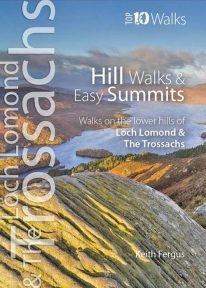-
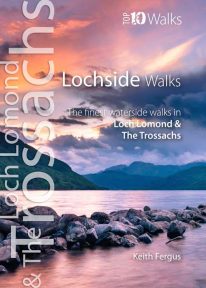 The ten best circular walks exploring the area’s seawater and freshwater lochs and lochans, including lochs Lomond, Katrine, and Venachar. Stunning scenery and unusual wildlife. Featured walks include: Luss, Balloch Castle Country Park, Loch Lomond NNR, Balmaha & Milarrochy, Sallochy Wood & Dun Maoil, Along Loch Katrine, Loch Ard, Loch Katrine & Loch Arklet, Inversnaid & Loch Lomond and Loch Venachar.
The ten best circular walks exploring the area’s seawater and freshwater lochs and lochans, including lochs Lomond, Katrine, and Venachar. Stunning scenery and unusual wildlife. Featured walks include: Luss, Balloch Castle Country Park, Loch Lomond NNR, Balmaha & Milarrochy, Sallochy Wood & Dun Maoil, Along Loch Katrine, Loch Ard, Loch Katrine & Loch Arklet, Inversnaid & Loch Lomond and Loch Venachar. -
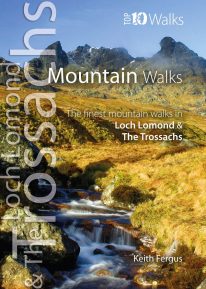 WITH MORE THAN FORTY MOUNTAINS over 2,500 feet spread across the Loch Lomond and The Trossachs National Park, it is tricky to choose just ten favourites. This careful selection aims to illustrate the rich diversity of mountain walks within the National Park. Classic Munros such as Ben Lomond and Stob Binnein are all visited, while other peaks are combined with near neighbours to provide more challenging walks. Enjoy the ten best circular walks exploring the mountains and beinns of the lovely Loch Lomond and The Trossachs National Park. Featured walks include:
WITH MORE THAN FORTY MOUNTAINS over 2,500 feet spread across the Loch Lomond and The Trossachs National Park, it is tricky to choose just ten favourites. This careful selection aims to illustrate the rich diversity of mountain walks within the National Park. Classic Munros such as Ben Lomond and Stob Binnein are all visited, while other peaks are combined with near neighbours to provide more challenging walks. Enjoy the ten best circular walks exploring the mountains and beinns of the lovely Loch Lomond and The Trossachs National Park. Featured walks include:- Ben Lomond (Ptarmigan Ridge),
- Ben Donich,
- The Cobbler,
- Ben Vorlich,
- An Caisteal,
- Cruach Ardrain,
- Beinn Odhar,
- Stob Binnein,
- Ben Venue
- Ben Ledi
-
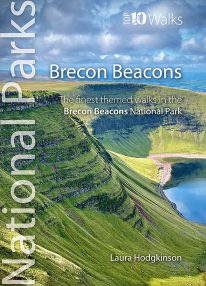 by Laura Hodgkinson This good looking, modern walking book will take you on ten short circular themed walks across South Wales' ever-popular Brecon Beacons National Park. The Brecon Beacons was Britain’s 10th National Park, established in 1957 to preserve and highlight the unique landscape of the area. The Brecon Beacons are said to be named after the historical practice of lighting beacons of fire upon hilltops to forewarn neighbouring valleys of invasion. The Brecon Beacons cover 1,344 square kilometres / 519 square miles with it’s spectacular waterfalls, valleys and expanse of hilly terrain; the Black Mountain to the west, the Fforest Fawr Geopark, Waterfall Country and the Pen y Fan range at the centre, and The Black Mountains to the east. The variety of flora and fauna is as vast as the landscape. Rare sub-arctic, alpine plants thrive within this unique climate. Mammals you're likely to spot include include wild mountain ponies, horseshoe bats, otters and water voles. Often seen birds of prey include the buzzard and iconic red kite. It's a wonderful area for walking and for everyone with a love of the outdoors.
by Laura Hodgkinson This good looking, modern walking book will take you on ten short circular themed walks across South Wales' ever-popular Brecon Beacons National Park. The Brecon Beacons was Britain’s 10th National Park, established in 1957 to preserve and highlight the unique landscape of the area. The Brecon Beacons are said to be named after the historical practice of lighting beacons of fire upon hilltops to forewarn neighbouring valleys of invasion. The Brecon Beacons cover 1,344 square kilometres / 519 square miles with it’s spectacular waterfalls, valleys and expanse of hilly terrain; the Black Mountain to the west, the Fforest Fawr Geopark, Waterfall Country and the Pen y Fan range at the centre, and The Black Mountains to the east. The variety of flora and fauna is as vast as the landscape. Rare sub-arctic, alpine plants thrive within this unique climate. Mammals you're likely to spot include include wild mountain ponies, horseshoe bats, otters and water voles. Often seen birds of prey include the buzzard and iconic red kite. It's a wonderful area for walking and for everyone with a love of the outdoors. -
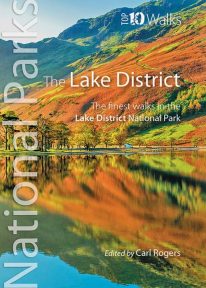 Discover the very best of the Lake District. Part of the Lake District’s unique attraction is its compactness. Within its boundaries are a rich mix of lakes, mountains, forests and farmland characterised by pretty villages, winding roads, deep dales and valleys, drystone walls and distinctive Herdwick and Swaledale sheep. Ready to explore? Discover the two loveliest lakeside walks, the best pub walk, and the most amazing view. Visit Cumbria’s stunning Castlerigg stone circle, scale its best-loved low and high fells, or marvel at its most dramatic waterfall. Every one is a walk to remember.
Discover the very best of the Lake District. Part of the Lake District’s unique attraction is its compactness. Within its boundaries are a rich mix of lakes, mountains, forests and farmland characterised by pretty villages, winding roads, deep dales and valleys, drystone walls and distinctive Herdwick and Swaledale sheep. Ready to explore? Discover the two loveliest lakeside walks, the best pub walk, and the most amazing view. Visit Cumbria’s stunning Castlerigg stone circle, scale its best-loved low and high fells, or marvel at its most dramatic waterfall. Every one is a walk to remember. -
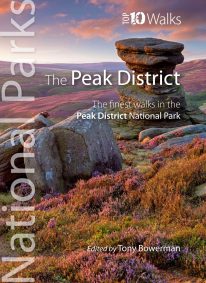 Discover the very best of the Peak District. These ten themed walks explore the contrasting faces of the Peaks — the gentle White and rugged Dark Peak. Discover clear rivers and streams, ancient packhorse bridges and stepping stones. Walk through winding dales and valleys bright with wildflowers. Visit stately Chatsworth or marvel at the panorama from Monsal Head. Tour upland reservoirs and dramatic rocky edges popular with climbers. Slog up Shutlingsloe or explore the open moorland and strangely eroded tors on Kinder Edge. Every one is a walk to remember.
Discover the very best of the Peak District. These ten themed walks explore the contrasting faces of the Peaks — the gentle White and rugged Dark Peak. Discover clear rivers and streams, ancient packhorse bridges and stepping stones. Walk through winding dales and valleys bright with wildflowers. Visit stately Chatsworth or marvel at the panorama from Monsal Head. Tour upland reservoirs and dramatic rocky edges popular with climbers. Slog up Shutlingsloe or explore the open moorland and strangely eroded tors on Kinder Edge. Every one is a walk to remember. -
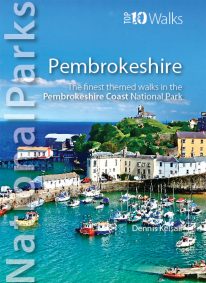 by Dennis Kelsall This superbly-written and good looking book will take you on ten short circular walks to the very best stretches of coast, pubs, tea shops, and viewpoints that the beautiful Pembrokeshire coast, in West Wales, has to offer. Defining the south-westernmost tip of Wales, Pembrokeshire’s coastline is arguably the most beautiful and varied in the British Isles. Virtually all of it lies within the Pembrokeshire Coast National Park. Relative isolation has left it largely untouched by modern development and most of its length is a wild frontier where the endless confrontation between sea and land is played out. Long stretches of coast face the fury of Atlantic storms and weakness and faults in the high cliffs are eroded into caves, coves and inlets. However, the harder rock, some of which is 700 million years old, resists the onslaught and stands out in rugged promontories and headlands. Elsewhere, sheltered landings and harbours, fine beaches and secluded bays reveal other aspects of this glorious landscape. In spring and summer the cliff tops break out in the pink, blue, white and yellow of countless flowers and sea crags are alive with nesting birds, while some of Britain’s largest seal populations arrive in autumn to give birth. It was this wild beauty that prompted the establishment of the Pembrokeshire Coast National Park in 1952. Despite being one of the UK’s smaller National Parks, it embraces a third of the county including all the offshore islands, the Daugleddau estuary, and the Preseli Hills. The Park is also home to the popular Pembrokeshire Coast Path — now part of the larger Wales Coast Path. Discover dramatic coastlines at St Davids Head and Strumble Head, Manorbier and Tenby. Climb to lofty coastal panoramas at Carn Ingli and Carn Llidi. Enjoy characterful waterside pubs at Porthgain and Cresswell Quay. Or relax over a quiet cup of coffee or tea and cake at two of Pembrokeshire’s cosiest and most welcoming tea shops and cafés. Unmissable.
by Dennis Kelsall This superbly-written and good looking book will take you on ten short circular walks to the very best stretches of coast, pubs, tea shops, and viewpoints that the beautiful Pembrokeshire coast, in West Wales, has to offer. Defining the south-westernmost tip of Wales, Pembrokeshire’s coastline is arguably the most beautiful and varied in the British Isles. Virtually all of it lies within the Pembrokeshire Coast National Park. Relative isolation has left it largely untouched by modern development and most of its length is a wild frontier where the endless confrontation between sea and land is played out. Long stretches of coast face the fury of Atlantic storms and weakness and faults in the high cliffs are eroded into caves, coves and inlets. However, the harder rock, some of which is 700 million years old, resists the onslaught and stands out in rugged promontories and headlands. Elsewhere, sheltered landings and harbours, fine beaches and secluded bays reveal other aspects of this glorious landscape. In spring and summer the cliff tops break out in the pink, blue, white and yellow of countless flowers and sea crags are alive with nesting birds, while some of Britain’s largest seal populations arrive in autumn to give birth. It was this wild beauty that prompted the establishment of the Pembrokeshire Coast National Park in 1952. Despite being one of the UK’s smaller National Parks, it embraces a third of the county including all the offshore islands, the Daugleddau estuary, and the Preseli Hills. The Park is also home to the popular Pembrokeshire Coast Path — now part of the larger Wales Coast Path. Discover dramatic coastlines at St Davids Head and Strumble Head, Manorbier and Tenby. Climb to lofty coastal panoramas at Carn Ingli and Carn Llidi. Enjoy characterful waterside pubs at Porthgain and Cresswell Quay. Or relax over a quiet cup of coffee or tea and cake at two of Pembrokeshire’s cosiest and most welcoming tea shops and cafés. Unmissable. -
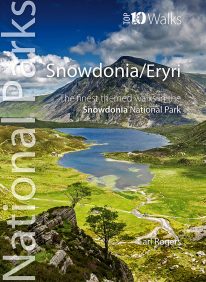 Discover the very best of the dramatic Snowdonia National Park, in North Wales. These ten themed walks will take you to the best and most iconic places across Snowdonia, from the mighty Aber Falls in the north, to Cadair Idris, in the south. Famous for its lofty mountains and open hills, Snowdonia is characterised, too, by dramatic upland lakes and tarns enfolded within glacial troughs and valleys, and short, steep rivers tumbling to the sea. Discover vast empty beaches, friendly pubs and stunning views, hidden lakes and awesome waterfalls, challenging hills and mighty mountains. Every one is a walk to enjoy and savour on the day, and to remember long afterwards.
Discover the very best of the dramatic Snowdonia National Park, in North Wales. These ten themed walks will take you to the best and most iconic places across Snowdonia, from the mighty Aber Falls in the north, to Cadair Idris, in the south. Famous for its lofty mountains and open hills, Snowdonia is characterised, too, by dramatic upland lakes and tarns enfolded within glacial troughs and valleys, and short, steep rivers tumbling to the sea. Discover vast empty beaches, friendly pubs and stunning views, hidden lakes and awesome waterfalls, challenging hills and mighty mountains. Every one is a walk to enjoy and savour on the day, and to remember long afterwards. -
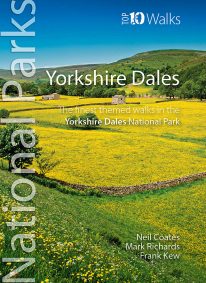 Discover the very best walks in the Yorkshire Dales National Park. These ten themed walks explore the contrasting faces of the Yorkshire Dales — the gentle flower-filled Dales and the wild and rugged uplands with their drystone walls, waterfalls, limestone pavements and iconic peaks. Find unspoiled pubs and friendly teashops. Visit tiny villages, castles, churches and ancient abbeys. Stroll beside crystal rivers or thrill to the thunder of some of Britain’s mightiest waterfalls. Conquer the Three Peaks of Pen-y-ghent, Ingleborough and Whernside. Or just enjoy the quiet countryside and spectacular scenery. Every walk here is a walk to savour.
Discover the very best walks in the Yorkshire Dales National Park. These ten themed walks explore the contrasting faces of the Yorkshire Dales — the gentle flower-filled Dales and the wild and rugged uplands with their drystone walls, waterfalls, limestone pavements and iconic peaks. Find unspoiled pubs and friendly teashops. Visit tiny villages, castles, churches and ancient abbeys. Stroll beside crystal rivers or thrill to the thunder of some of Britain’s mightiest waterfalls. Conquer the Three Peaks of Pen-y-ghent, Ingleborough and Whernside. Or just enjoy the quiet countryside and spectacular scenery. Every walk here is a walk to savour. -
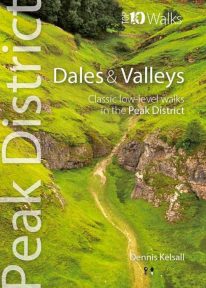 This attractive pocket size book gives you the ten very best dale and valley walks in the Peak District. The White Peak is known for dramatic limestone gorges: convoluted pathways carved into its heart, where rearing pinnacles, dark caves and thundering rivers struck awe into seventeenth-century travellers. Still captivating today, they harbour rich woodland, wildflower meadows and disappearing and resurgent streams, one of the area’s strangest curiosities. Delightful Dovedale, once the haunt of the renowned anglers Izaak Walton and Charles Cotton, contrasts with Cave Dale, a gaunt, dry passage below Castleton’s Norman stronghold. But the Dark Peak has attractive valleys too, and different again is the Dane Valley, which cuts onto the Cheshire Plain from the gritstone moors.
This attractive pocket size book gives you the ten very best dale and valley walks in the Peak District. The White Peak is known for dramatic limestone gorges: convoluted pathways carved into its heart, where rearing pinnacles, dark caves and thundering rivers struck awe into seventeenth-century travellers. Still captivating today, they harbour rich woodland, wildflower meadows and disappearing and resurgent streams, one of the area’s strangest curiosities. Delightful Dovedale, once the haunt of the renowned anglers Izaak Walton and Charles Cotton, contrasts with Cave Dale, a gaunt, dry passage below Castleton’s Norman stronghold. But the Dark Peak has attractive valleys too, and different again is the Dane Valley, which cuts onto the Cheshire Plain from the gritstone moors. -
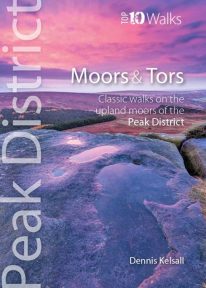 This lovely, pocket size book offers the ten best short circular walks to upland moors and tors across the Peak District. The uplands of the Peak bear the characteristics of hills rather than mountains: high, undulating plateaux dissected by deep, meandering valleys. Yet there is little uniformity; the seemingly remote moorland of the Kinder plateau is in sharp contrast to the gentler and lower upland heaths found farther south. These landscapes change subtly with the seasons and, for those who care to look, are rich in wildlife. There are birds, hares, and foxes; and in summer, adders and lizards bask in the sun while butterflies dance in the remotest places.
This lovely, pocket size book offers the ten best short circular walks to upland moors and tors across the Peak District. The uplands of the Peak bear the characteristics of hills rather than mountains: high, undulating plateaux dissected by deep, meandering valleys. Yet there is little uniformity; the seemingly remote moorland of the Kinder plateau is in sharp contrast to the gentler and lower upland heaths found farther south. These landscapes change subtly with the seasons and, for those who care to look, are rich in wildlife. There are birds, hares, and foxes; and in summer, adders and lizards bask in the sun while butterflies dance in the remotest places. -
 Even the Peak District's name conceals a mystery. Forget the obvious: a visitor expecting towering peaks will be disappointed, as the name comes from the Pecsaetan tribe who once lived here. But there’s a twist: the Anglo-Saxon means “settlers of the Pec”…and that word pec has the same root as our peak, the dialect pike and the Pyrenean pic. So, ultimately, the Peak District is named after its peaks, after all. The Peak District is broadly defined by the conurbations at its corners: Manchester, Sheffield, Derby and Stoke. Within this rectangle, the National Park forms a rough oval of around 550 square miles. The area is traditionally divided into the Dark Peak – peat moorland edged by gritstone, with rugged villages in the valleys — and the softer White Peak - upland pastures defined by drystone walls, divided by gorges and limestone villages. The eastern and western moors are similar to the Dark Peak, but have their own subtly distinctive characters. The Peak District was occupied by humans long before the Pecsaetans and in each era man has left his mark, from prehistoric standing stones and rock art, through the folk legends, crosses and churches of the Middle Ages, to post-medieval follies and puzzling relics of the extraction of lime and lead. The varied geology of the area throws up natural curiosities too: its dark gritstone has wind-sculpted tors and edges, while its gleaming limestone hides caves and subterranean rivers. This handy pocket size book will take you on short circular walks to the ten most fascinating, odd or strange places in the Peak District. Prepare to be amazed and surprised.
Even the Peak District's name conceals a mystery. Forget the obvious: a visitor expecting towering peaks will be disappointed, as the name comes from the Pecsaetan tribe who once lived here. But there’s a twist: the Anglo-Saxon means “settlers of the Pec”…and that word pec has the same root as our peak, the dialect pike and the Pyrenean pic. So, ultimately, the Peak District is named after its peaks, after all. The Peak District is broadly defined by the conurbations at its corners: Manchester, Sheffield, Derby and Stoke. Within this rectangle, the National Park forms a rough oval of around 550 square miles. The area is traditionally divided into the Dark Peak – peat moorland edged by gritstone, with rugged villages in the valleys — and the softer White Peak - upland pastures defined by drystone walls, divided by gorges and limestone villages. The eastern and western moors are similar to the Dark Peak, but have their own subtly distinctive characters. The Peak District was occupied by humans long before the Pecsaetans and in each era man has left his mark, from prehistoric standing stones and rock art, through the folk legends, crosses and churches of the Middle Ages, to post-medieval follies and puzzling relics of the extraction of lime and lead. The varied geology of the area throws up natural curiosities too: its dark gritstone has wind-sculpted tors and edges, while its gleaming limestone hides caves and subterranean rivers. This handy pocket size book will take you on short circular walks to the ten most fascinating, odd or strange places in the Peak District. Prepare to be amazed and surprised.

